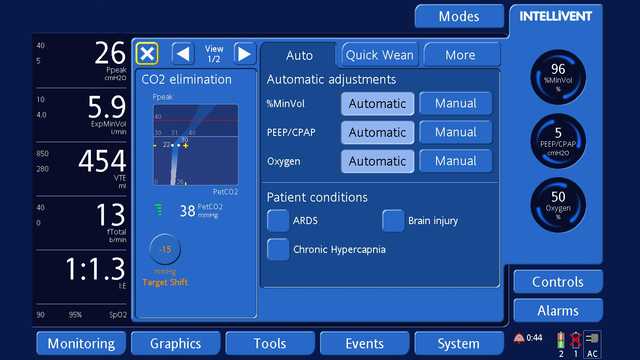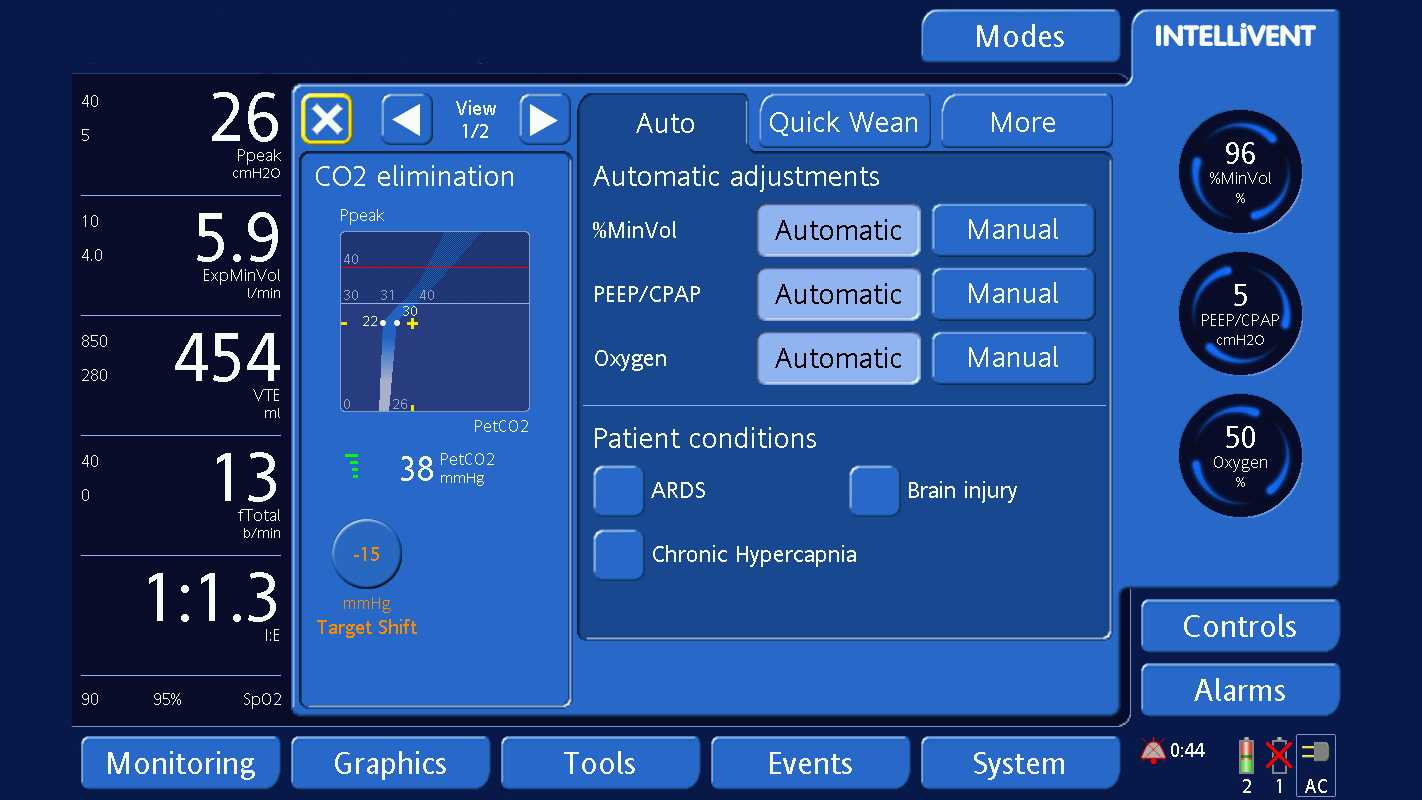
Author: Francesca Walther
Date of first publication: 29.01.2021
Last change: 27.01.2021
Link to video added; shift of 15 mmHg instead of 10 ‑ 15 mmHg
PaCO2‑PetCO2 gradient
In general, PetCO2 value represents a reliable index of CO2 partial pressure in the arterial blood (PaCO2) (measured using blood gas analysis (BGA)). To get the most accurate approximation of PaCO2, the second highest PetCO2 value out of 8 breaths is used.
Under common conditions, PaCO2 is approximately 3‑5 mmHg higher than PetCO2 ‑ the difference between the values is referred to as the PaCO2‑PetCO2 gradient. Under special clinical conditions (including ventilation/perfusion problems or presence of a shunt), the PaCO2‑PetCO2 gradient can increase, requiring adjustment of the ventilation targets.
Target Shift control
The Target Shift control (INTELLiVENT‑ASV window) allows you to move the PetCO2 target range to the left (lower values) or to the right (higher values) within the limits defined.
| PaCO2/PetCO2 | mmHg |
|---|---|
| PaCO2 (BGA) | 60 |
| PaCO2 target (physician) | 40‑50 |
| PetCO2 patient (measured) | 38 |
Target shift if PaCO2 is too high
Because the measured PetCO2 is in the PetCO2 target range, INTELLiVENT‑ASV does not see a need to increase %MinVol. However, the target range for PetCO2 needs to be lower because of the PaCO2‑PetCO2 gradient.
Where PaCO2 (BGA) is too high, shift the target range 15 mmHg to the left (see image below). The %MinVol will increase resulting in a decrease in patient CO2.
Follow the link below to watch our video showing how to shift the PetCO2 target range in INTELLiVENT‑ASV (

Points to note
- You should record the measured patient PetCO2 value just before the BGA.
- To proceed as described, the measured patient PetCO2 needs to be in the target range for PetCO2.
- If the patient is not within the set target PetCO2 range just before BGA, you can still adjust the target range as above.
Remember that INTELLiVENT‑ASV will always try to bring the patient into the middle of the target range. This is particularly important when adjusting the target range where the patient is not in the set range just before BGA.
Relevant devices: HAMILTON‑G5/S1 (SW v2.8x and later); HAMILTON‑C1/T1 (SW v3.0.x and later); HAMILTON‑C3 (SW v2.0.x and later); HAMILTON‑C6 (SW v1.1.x and later)
Footnotes
- A. Not available in the US and some other markets



